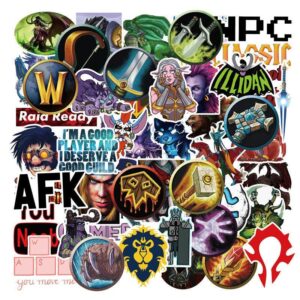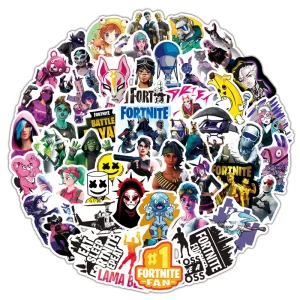The self-published sequel to Area 35’s previous Tiny Metal title, Full Metal Rumble continues to define the series by its elegance in simplicity. Employing very basic turn-based strategy gameplay and a timeless cel shaded style, it manages to take something that appears at first glance to be a sub-par mobile game and craft tactically deep and involving gameplay.
Full Metal Rumble maintains its predecessor’s Japanese roots, with the game’s anime-style commanders and high-tech mecha reminiscent of many military-style ‘real robot’ shows of the nineties.
Tiny Metal pairs this seamlessly with the more mystical elements of Hideaki Anno’s shows like Gunbuster or Neon Genesis Evangelion, with the mythical mega mecha and the sinister Dinoldans.
There are anti-infantry vehicle units, anti-vehicle infantry units, anti-air vehicle units, anti-vehicle air units, anti-air air units, and anti-anti-air air units and it’s all so marvelously confusing. However, once you’ve got a handle on how to play with each of them, it can get a bit repetitive.
While the game boasts an impressive unit roster, many are more expensive and powerful versions of previous units. The Heavy Metal Tank succeeds the eponymous Metal Tank and the Artillery Striker upgrades to the Heavy Striker. Even the commander units are just upgraded regular units.
There are enough fundamentally dissimilar units to get around this, and it’s fun to play around with them all. In addition, most effective strategies require use of all of them in some capacity.
The Methods of War
While most modern strategy games have you constructing your own buildings and mining your own resources, everything you use to build an army in Full Metal Rumble is found on the map itself.
You must capture cities to gain income, as well factories and airports to build units. This sounds easy enough, but only infantry units can capture tiles, meaning you have to send your squishiest units out as a vanguard to establish any map presence.
This makes the gameplay very aggressive. If you allow the enemy to push across the map and capture more cities than you, you’ll be slowly and inevitably crushed by their superior economy. You have to push the map out as quickly and effectively as you can, guarding your infantry with sturdier units or hiding them in APCs.
However, aggression can be dangerous, as the fog of war hides your enemies’ movements until a unit’s turn is complete. So, you could send key units out into an ambush without realising it until it’s too late. Units can use these surround positions to ‘focus fire’, pooling their attack and only allowing you to counter-attack one of their units, if your unit even survives. There are radar units to help deal with this, but they’re slow and unarmed. You have to take care to defend them, so they may well delay your push. Balancing this need for aggression with the risk of counter-attack comprises the core of the game’s strategic depth.
The controls are quite obtuse at first, as each unit needs to have their turn ended manually, and right-clicking will undo the entire movement. Turns need to be ended manually from the start menu as well, otherwise it will make you complete every available action first.
The Missions of War
There are three key mission types. Either you have to survive a number of days (turns), destroy a certain number of units, or capture the enemy HQ. These missions don’t play all that differently, as each can be ended by wiping out all units or capturing their HQ, regardless of the primary objective.
You can be defeated by the same means, or by having one of your ‘commander units’ destroyed. These commander units are very powerful, but you can lose the game instantly if you misposition them.
The commanders also have unique bonuses depending on what you pick. The Whitefang Mercenaries in blue have bonuses to infantry production and attack, with further powers that can enhance their attack and capture speed. Most commanders follow the same pattern, built around passive bonuses to a certain type of unit.
The Challenge of War
The game’s difficulty is very hard to assess. Those unskilled or new to strategy games will certainly find Full Metal Rumble difficult, but I doubt it will offer much challenge to those familiar with the genre.
There’s certainly strategic depth to balancing the advantages and disadvantages to units, managing army composition and balancing the fight for resources with caution, but all of that can be undermined after you lose once.
Information is the most powerful asset in this game. Knowing your opponent’s army composition and where they’re coming from makes it much easier to beat them. This seems to be something the game’s developers are aware of, as the easy difficulty mode makes no tangible changes to gameplay besides removing the fog of war, allowing you to see your enemy’s units and positions at all times.
Knowing what to build and where to send your army gives you an advantage in resources and a slow, if grueling victory. There’s still some challenge there, as it can often take ten or fifteen turns to make the killing blow, and that’s plenty of time to be caught out. But at that point, it’s your game to lose.
So, while many maps are very challenging on the first try, very few are on the second. And that’s not always a bad thing. It feels quite compelling to get your arse kicked, then come back and play around what beat you. But for those who define the merit of a game like this on challenge alone, there’s not much to be found here.
The Art of War
The game’s cel shaded artistic presentation seems unimpressive at first, but once you see it in motion its merit becomes apparent. The terrains are simplistic, but diverse, ranging from forests, to tundra, and then to jungle.
It’s in the units that Area 35‘s chosen art-style shines. Each one is well-detailed and moves smoothly, best showcased in the game’s small combat sequences. They also manage to be immediately distinguishable from one another. Even the units that are just simple upgrades look strikingly different, making gameplay feel more dynamic.
While there is no artistic distinction between the different faction’s units, there is at least a simple difference in paint-job. This applies to the buildings as well, so the map territories are easy to note.
The Sounds of War
The in-game sounds are quite well done. Combat feels weighty and impactful, with each unit having a particularly resonant strike.
All units also have their own dubbed lines, which may be grating or amusing, depending on your sense of humour. Random movie references comprise the vast majority of them. So if that’s your thing, it may well be a plus. However, there’s also no real cohesion to these voices. Units from the same nation will have wildly different accents. One tank might be Russian, while the next is very obviously Scottish. The dubbing on the characters themselves is a great deal more bearable. That doesn’t sound like a compliment, but for Japanese to English dubs, it is. It’s quite professional by the standards most games making that leap set.
The sound really comes to life in the soundtrack, though. Tomoki Miyoshi is the man responsible for it’s composition, a well-regarded name often found among Japanese titles. He’s contributed to games like I am Setsuna, Steins;Gate, Soulcalibur V, and Digimon Survive.
It really lends itself to the militaristic nature of the narrative and the gameplay. Without it, the whimsical voice acting and cartoonish art-style risk undermining the game. Miyoshi’s soundtrack helps keep it more grounded.
Endless War
All missions are playable from an overworld map, traversed with various vehicles. While the earlier missions won’t force you to diversify your tactics, you’re free to retry later missions on harder difficulties or with different units at any time. Each commander’s unique bonuses can help promote different tactics too.
Furthermore, each mission has unique challenge objectives, as well as a completion ratings for you achieve. That being said, I never scored lower than an A, and I am horrendously bad.
If you manage to beat every mission on hard difficulty, you can unlock master difficulty to challenge yourself further. There’s also skirmish style encounters you can play from the main menu. You can even unlock extra maps by spending in-game currency. So, Tiny Metal: Full Metal Rumble still has plenty to offer after you’ve beaten its story.
There’s also a multiplayer mode, although since I played prior to release, I cannot attest to how populated that will be and how well the servers will hold up.
Final Verdict
Tiny Metal: Full Metal Rumble does everything it attempts very well. It’s a solid turn-based strategy title and boasts an impressive level of polish. It’s a welcome evolution of the formula that birthed the first Tiny Metal. It manages to be accessible and challenging for people who aren’t familiar with the genre, but doesn’t really hold up for genre veterans. Between that and a few obtuse control issues, it lands firmly on the cusp of being something great.
I’d definitely give this one a play, but even without owning a Switch, I can tell it would be a far better experience there than it was on PC. Full Metal Rumble lends itself very well to short bursts of gaming — clear one or two levels, then put it away for next time.
If you want to see more reviews like this, head on over to OpenCritic and look for us there. You can also check out our reviews of Irony Curtain: From Matroyshka with Love and Stranger Things 3: The Game!
Summary
I’d definitely give this one a play, but even without owning a Switch, I can tell it would be a far better experience there than it was on PC. Full Metal Rumble lends itself very well to short bursts of gaming — clear one or two levels, then put it away for next time.
Overall
70%Pros
- Deep tactical gameplay.
- Unique but effective take on modern real-time strategy.
- Setting enhanced and protected by the soundtrack.
- Diverse roster of units.
- Well voice-acted.
Cons
- Unintuitive control scheme.
- Not much diversity in valid strategies.
- Challenge doesn’t hold up to repeat plays.













